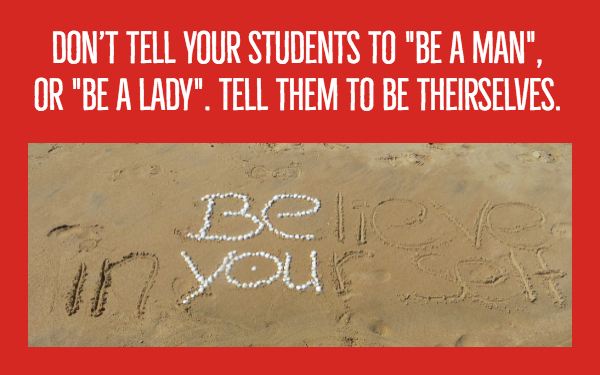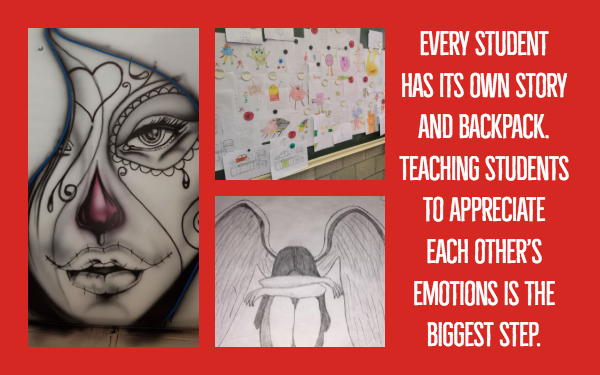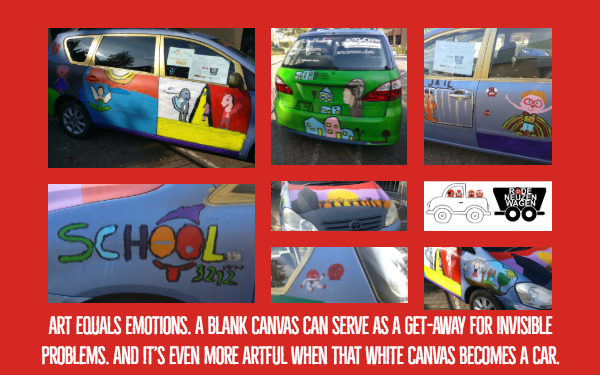How to make students express their emotions
 Ruben Knapen & Lucie Renard —
Ruben Knapen & Lucie Renard —
Social emotional learning is a key component in teaching young children. As a teacher, you’re likely to encounter students with a particular social emotional expression. It’s important in todays society you also spend time educating your students about how to recognize, manage, and express healthy emotions and feelings or psychological problems.
In this blog post, I’ll try to convince you of the importance of this, and I’ll give you some engaging ways to teach children about expressing and coping with emotions in the classroom.
Why expressing emotions is a good thing
Schools need to develop a culture in which teachers and pupils talk freely about their feelings. To have a calm conversation about emotions, it’s important to recognize the feelings students have. That way, students are able to name them. That’s why it’s important to learn students to identify their different emotions.
Lots of them will laugh at it, and will not understand the importance. They’ve always been told to “man up” or to “be a lady”. But understanding one’s emotions can influence students in a good way.
As a teacher, we learn how to deal with different situations and how to approach a student or their parents. So why shouldn’t students learn this as well?
An example
Two boys are eating together, and a third comes in and takes the sandwich of one of them. It’s good for students to know how they feel about it, and express it in the right way. For example “Hey, I am quite upset about the fact you just took my sandwich like that!” without much of a fight and with a calm voice.
If students are taught in the right way to speak up with a calm tone, the school would have a better student climate. If you ask me, you impress me the most with a calm and serious voice. You start yelling at me? Not impressed at all.

What to do when noticing emotions
When you see an angry, worried, or sad student in your classroom, it’s very important to first start acknowledging the emotions and start expressing empathy.
Do not ignore those emotions, move straight into problem solving, start giving advice, or making suggestions. Acknowledging and expressing empathy means a short sentence naming the emotion, checking whether this is true, and saying that you care about their struggle.
An example
I can see you are feeling really sad right now. I’m so sorry you are feeling so sad.
I can be totally wrong but you seem kind of frustrated. It must feel bad.
You have to know you can’t direct this to the student in front of the class. It’s better said quietly, directly to the student. If you’re wondering what the benefits of acknowledging and empathising with emotions are, here are some:
Students feel the care and they know you see them.
Emotions are not dangerous things! You can have them, you can speak about them, and you are still okay. It increases the chance they will be able to identify and express emotions themselves next time.
It’s important that the students know that showing emotions is encouraged, and is a “normal thing”. Every student has its own story and backpack. Teaching students to appreciate each others' emotions is the biggest step.
The power of positive reinforcements
Praising, rewarding, and all sorts of positive reinforcement are amazing, powerful tools which can increase the chance of behaviour occurring again.
Tip: don’t only praise and reward students when they receive a great test or a great task. You should provide them with positive reinforcement when they act in calm or brave ways as well.
An example
You really tried not to yell, I’m happy to see that. I saw your struggle when it came to reading that chapter, but you did a great job!
Tom, I noticed you were getting frustrated when I was asking you to do that work. You did great anyway, and are becoming more of a calm student. I’m impressed.
Talking connects students with each other
It’s important that the students know that showing emotions is encouraged, and is a “normal thing”. Every student has its own story and backpack. Teaching students to appreciate each other’s emotions is the biggest step.
Opening up discussions about certain topics or feelings in the classroom can help break through the anonymity of a large class where students don’t know each other.
Talking puts some perspective on individual efforts to learn. It reduces stress, adjusts attitudes and motivates learning. Helping each other out and knowing the struggles of your friends will reduce the amount of bullying in school. If you would want to know more about how to deal with bullying, you can always check out this blog of ours.

Ways to help students express their emotions
Expressing emotions isn’t always easy. Most students keep emotions for themselves and don’t talk to anyone. That’s something they absolutely shouldn’t do. Of course, it’s hard to encourage them to talk to someone about their emotions or problems.
There are many other ways to help students cope with strong emotions and emotional well-being challenges in the classroom.
Here’s a short list of strong school-projects that help students cope with emotions and (psychological) problems. If you want to teach your students to emphasise with each other, make sure to take a look at this guide.
1. Cross the line with Challenge day
This program was set up for students in schools to speak up, make confessions, and to forgive each other about what others said to them or what they’ve done to other students. It’s a day where students cross the line, showing many similarities between each other, and the struggles they have to go through. It’s a day that encourages students to conquer their emotions and just to let them go. It’s the day where the dark comes out of the shadows, into the light and where students get the support the need from each other.
You should definitely check out this MTV video about challenge day, and how it affects almost every student. You’ll notice that talking is the key factor in opening up emotions and handle (psychological) problems students didn’t even know others had.
2. Red Nose Day
The Red Nose Day campaign raises money and awareness for young people with psychological problems. They encourage everyone to sell red ‘clown’ noses and to put up fund raisers for this charity.
It’s already the fourth time this campaign is organized. The raised money goes to houses were youngsters can be themselves and talk to people about their problems. It’s some kind of a shelter and a fun house at the same time.
The special thing about this year’s edition is that they focus on schools. Students spend most of their time in school, teachers spend most of their time with students. Schools are at the basis of finding out what’s in a student’s head. The schools that raise money for this campaign, get to keep the money for future projects handling this issue.
3. Red Nose Car
The Red Nose Car is an action, set up for Red Nose Day, with a twist. As you will know by now, it’s hard for students to free their emotions. That’s why Christine, a Belgian artist came up with an idea: “Art equals emotions. A blank canvas can serve as a get-away for invisible problems. And it’s even more artful when that white canvas becomes a car.”
She managed to convince partners such as BookWidgets and The Mind academy to go along in het story. Eventually, Christine managed to find 9 cars.
This campaign encourages students to sketch emotions and make drawings out of them. Afterwards, they paint the car with their drawings. Letting go of emotions in this way opens up the conversations of what’s going on in a student’s head. At this moment, 9 schools are painting cars into modern and emotional artworks.

TIP: You can do the same with your students on small paintings and hang the artwork on the walls in your school.
Art isn’t the only way to make students express their emotions. Some people make music, others arrange their words into poems. Sport can also be a way to clear your head. And there are many other ways. Try to find a way your students are fine with and that has a low threshold for students to step up.
And again: Don’t tell your students to “be a man”, or “be a lady”. Tell them to be theirselves.


